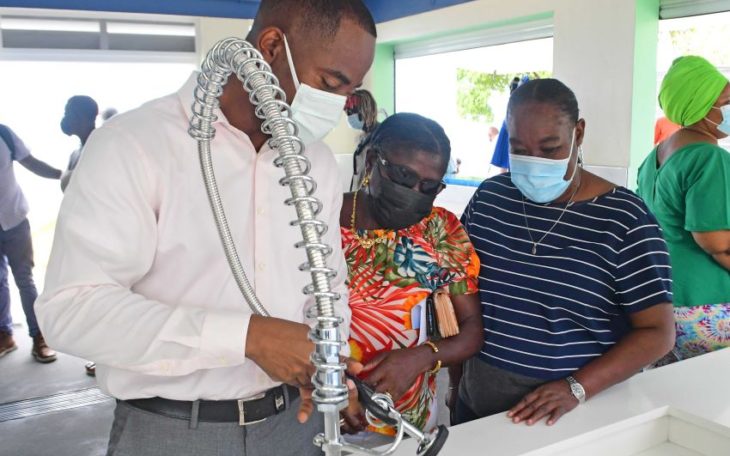By Kimberley Cummins
The marine environment is often one of the most important economic resources for many small islands, even if its direct value is not reflected in the gross domestic product (GDP).
In Barbados, while seafood imports exceed exports which are low in both volume and value compared to other countries that have fisheries for lobster and shrimp, fish is important for local food security. Seaside communities such as Oistins, Six Men’s, Martin’s Bay, Tent Bay, Consett Bay, Skeete’s Bay have traditionally been dependent on the fisheries sector for sustenance. Be it through fishing, processing, distribution, retailing, net making, boat building, etc., the entire life of a village was stimulated by the sector.
This feature dates back centuries when after Emancipation in 1834, fishery was arguably one of the first self-directed enterprises for many free black people— independent of the plantation/agrarian ethos. This could be because prior to the 1625 invasion of the British colonisers, the indigenous occupants of the island were self-sufficient and depended on the natural flora and fauna for their survival. In addition, as historian Professor Pedro Welch was quoted by Dr Marcia Burrowes’ work Flying Fish ‘all-a-penny’: Representations of Barbadian Culture, there is also the probability that many of the enslaved Africans had a fishing heritage. According to Welch, they would have “brought with them considerable skills in fishing trade. These skills would have been represented in boat-building and in fishing, using hook, line and net”.
However, while Dr Patrick McConney et al in the 2017 research paper Building the Barbados National Union of Fisherfolk Organisations alludes to the belief “that Barbadian fishermen do not feel that they are involved in the decision-making process as they are not consulted by the fisheries administration as individuals or through an association”, the socioeconomic value of the sector cannot be understated. It is believed that whether directly or indirectly, the sector employs about 6,000 people. This is even though in 2013, the Caribbean Regional Fisheries Mechanism (CRFM) estimated employment was closer to 8,800 or 6.2 per cent of the labour force. The current fishing fleet consists of over 1,000 registered vessels, including four main types — Moses, day boats, ice boats and longliners — with all boat types increasing in numbers over the past five years.
The United Nations Conference on Trade Development (UNCTAD) 2020 paper, titled Economic and Trade Aspects of Fisheries and Coastal and Marine Environmental Services Sectors in Barbados also underscored the importance of the sector.
“The fishery sector is economically important with over 2,000 fishermen and 500 vendors seasonally employed in the sector. In addition, over 200 persons are employed as scalers or deboners at fish markets and approximately 125 are employed at fish processing plants. A significant share of the vendors and employees in processing plants are women. The harvest sector is made up of fishers and boat owners. Fishers make up 63 per cent of the harvest sector and boat owners 37 per cent. Overall, 78 per cent of the primary stakeholders (including boat owners) are active fishers. . . . Ninety-nine per cent of fishermen and 91 per cent of boat owners are males. Recently, the post-harvest sector has grown, attracting both young women and men in considerable numbers. Vendors and fish deboners make up the majority of the primary post-harvest stakeholders (37 per cent and 39 per cent, respectively),” the paper noted.
With that said, the sector is such a major brand identifier of Barbados that the flying fish is listed among the country’s most recognizable national emblems. Furthermore, the sector now also plays a vital role in Barbados’ main revenue source – tourism. So much so, when tourism officials market the island to overseas source markets, predominantly fishing hubs like Oistins and Cuz’s Fish Stand at Peebles Beach are most often included in marketing campaigns. In 2021, travel website Tripadvisor listed the Oistins Friday night Fish Fry as the sixth top attraction in Barbados, with the overwhelming majority of reviewers expressing the opinion that it was their favourite place to find “the best local seafood and local charm”.
Speaking at the Sir Harold Bernard St John Memorial Lecture in April 2015, Queen’s Counsel Ralph Thorne acknowledged that it was through the appropriation of Oistins’ rich fishing tradition that this southern town “has become what Bridgetown is striving to be once more, what Speightstown has lost, what Holetown does not wish to be, and what Warrens is unlikely to become unless it emerges from its culturally arid and barren commercial landscape”.
However, with Barbados’ obvious ecological vulnerabilities like climate change, which has been attributed to the rising ocean temperature and increased acidity which makes it more difficult for marine organisms to reproduce, as well as threatening already diminishing fish stock, it begs the question: what is the future of fisheries in Barbados?
In 2016, within the traded sector, the contribution of non-sugar agriculture and fisheries to real GDP was estimated to be $19.8 million, an annual increase of 0.5 per cent (Barbados Economic and Social Report, 2017). Percentage contribution to GDP by the fishing industry was estimated at 0.15 per cent. In 2016, the value of marine capture fish production was $7,910,852.
The report noted that notwithstanding the presence of Sargassum weed and its effects on flying fish in particular, the total fish catch increased to an estimated 1,658 tonnes, compared to the 1, 652 tonnes landed in 2016.
Flying fish accounted for the bulk (46.8 per cent) of the island’s fish catch, with 777 tonnes reported. However, despite the increase in landings from 2016 (by 308 tonnes), the 2017 flying fish catch remained the fourth weakest reported over the last 20 years. With the exception of swordfish, which remained unchanged, the annual landings of the majority of major large pelagic species groups, namely tunas, billfish and kingfish were reduced by 17.3 per cent, 7.9 per cent and 7.7 per cent, respectively, from the previous year.
Again in 2018, according to the Ministry of Maritime Affairs and the Blue Economy, total fish landings declined by 106 tonnes and stood at 1,552 tonnes. This count included another decline in flying fish caught. The primary cause for the depressed level of flying fish catch was ascribed to continued incursion of Sargassum seaweed in the main fishing areas. Nonetheless, flying fish remained the main contributor to the island’s fish catch, accounting for 49.9 per cent of total fish landings.
“Dolphin landings fell to 191 tonnes in 2018. This represented the lowest reported catch for this species over the last 20 years, 37 tonnes lower than the previous low reported in 2017 (228 tonnes) and is probably the lowest for this species since records of fish landings have been kept in the late 1940s. Declines in the annual landings of other major large pelagic species groups were also recorded in 2018, from the previous period. Additionally, landings of sharks fell by 40 per cent from the estimated 15 tonnes reported in 2017. Landings of snappers in 2018 (22 tonnes) declined by 29 per cent from the 31 tonnes in 2017,” the Barbados Economic and Social Report of 2018 noted.
Given this evidence of depleting fishing stock, a draft report prepared for the Food and Agriculture Organisation (FAO) of the United Nations, Oceans Economy and Trade Strategy: Barbados Pelagic Longline Fishery in 2020 found that in terms of the future value of the sector, Barbados’ large pelagic fisheries has great possibilities.
Currently, the main target species of longline fishing are large tunas (yellowfin and bigeye) which account for an estimated 48 per cent of the total catch; billfish (swordfish, blue and white marlin), and to a lesser extent Atlantic sailfish. Barbados is presently under the quota set by the International Commission for the Conservation of Atlantic Tunas (ICCAT) for tunas and swordfish. This provides the potential to increase production from tunas and swordfish without overfishing of stocks, destruction of their habitats or adversely affecting the other users of the marine space.
The number of active longline vessels in the Barbados fleet continues to increase. The Fisheries Division recorded that the first registered longline vessel entered the pelagic fleet in 1990 and quickly increased from around four in late 1990 to 15 by 1995, then to 23 in 1997. For the period 2001-2008 the active fleet size rose from 25 to 34 vessels.
The FAO report detailed eight high-level interventions that, if implemented, could potentially increase the gross revenue generated in the fishery over the next seven years by $7.5 million or an average additional revenue of $1.1 million each year.
“There is great potential here for transitioning the fishery to a fresh loin product that uses sustainability criteria and traceability to improve market access and tuna sales prices while ensuring increased compliance. A very high-level summary of the implementation plan includes adding more value in Barbados by loining tunas currently exported as headed and gutted product and keeping that value in Barbados for the local stakeholders. Access to the market will be improved by installing electronic landings recording that will provide product traceability. Electronic data collection will directly improve monitoring, control and surveillance (MCS), which, in turn will improve International Commission for the Conservation of Atlantic Tuna (ICCAT) compliance.
“Additionally, it is recommended that the fishery be entered into a comprehensive fishery improvement plan (C-FIP), which will set sustainability benchmarks that will be independently audited. A C-FIP increases market access, improves local management and enhances ICCAT compliance, which will be important for Barbados to maintain favourable ICCAT country level quotas and advocate for suitable future quotas, should such quotas become necessary,” it stated.
Quite recently, Minister of Maritime Affairs and the Blue Economy, Kirk Humphrey indicated Government’s seriousness in this agenda when, on behalf of the Mia Mottley administration, he signed an agreement with the FAO for the Sustainable Fish Value Chains for Small Island Developing States (SVC4SIDS) project to further develop and improve the tuna fishery on island. The FAO revealed that the funds for this project have been granted by the Government of the Republic of Korea to the FAO and the project will run until April 2025. The project, led by FAO, has a total value of US$5.3 million whereby Barbados will benefit from approximately half of these funds over a period of five years.
“The SVC4SIDS project is in line with the overall objective of the Ministry of Maritime Affairs and the Blue Economy and of FAO in developing the blue economy in Barbados as it will improve the social, environmental and economic benefits of the pelagic fishery in Barbados. This project will further develop and improve the tuna fishery revenues and thus enable a transitioning of the fishery from exporting whole tunas to a fresh loined product providing increased revenues for fisherfolk, private sector and the government. The project will contribute to improving the economic performance of the tuna value chain through strengthened market access and more conducive business and regulatory environments, as well as enhanced financing, investment opportunities and capacity for long-term economic sustainability.
“Fisherfolk, private sector and the government will be actively working together to take the benefits of the Blue Economy directly to the fisherfolk who are an essential element of any development in this sector as it is expected to improve the capacity of the fisherfolk, improve their revenues, generate better decision-making information and support their stewardship through participation in management of the fishery,” the FAO wrote.
In 2019, a total of 469 tonnes of large pelagic species was landed in Barbados. The value of 300 tonnes of tuna at local basic grade is estimated at $6.6 million while high export grade can value $10 million. Tuna is currently the only seafood export product of Barbados.
This article appears in the November 29 edition of the Independence publication. Read the full publication here




